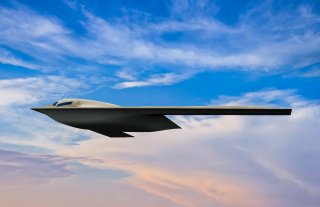The B-21 Raider Could Fly Alongside Unmanned Drones
Networking together manned and unmanned systems, such as “loyal wingman” drones can allow unmanned aircraft to move forward into high-risk areas without exposing humans.
Secretary of the Air Force Frank Kendall said the new B-21 Raider will incorporate new levels of manned-unmanned teaming.
“Defining the B-21 Long Range Strike Family-of-Systems” was one of seven operational imperatives for the Air and Space Forces that Kendall discussed on March 3 at the Air Force Association’s Warfare Symposium.
The B-21 imperative “identifies all of the components of the B-21 family of systems, including the potential use of more affordable un-crewed autonomous combat aircraft,” Kendall said, according to an Air Force press release.
That includes using the B-21 alongside unmanned systems and could also include unmanned flight for the bomber itself. Integrating the B-21 with drones makes sense for cost savings, survivability, and tactical purposes.
“The technologies are there now to introduce un-crewed platforms in this system-of-systems context, but the most cost-effective approach and the operational concepts for this complement to crewed global strike capabilities have to be analyzed and defined,” he said.
While there is no substitute for human decision-making, there are also unprecedented advantages to using drones in close coordination with the bomber.
Networking together manned and unmanned systems, such as “loyal wingman” drones can allow unmanned aircraft to move forward into high-risk areas without exposing humans. Drones could be used to test enemy air defenses before sending in a stealthy B-21, whether manned or unmanned. Armed drones could also be directed to jam or attack enemy air defenses when directed by a manned B-21 operating in the role of command and control.
“(Drones) could deliver a range of sensors, other mission payloads, and weapons, or other mission equipment and they can also be attributable or even sacrificed if doing so conferred a major operational advantage – something we would never do with a crewed platform,” Kendall said.
Kris Osborn is the Defense Editor for the National Interest. Osborn previously served at the Pentagon as a Highly Qualified Expert with the Office of the Assistant Secretary of the Army—Acquisition, Logistics & Technology. Osborn has also worked as an anchor and on-air military specialist at national TV networks. He has appeared as a guest military expert on Fox News, MSNBC, The Military Channel, and The History Channel. He also has a Master's Degree in Comparative Literature from Columbia University.
Image: U.S. Air Force.

